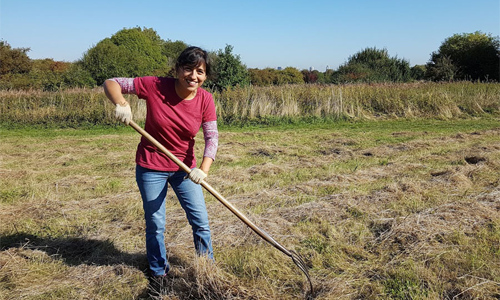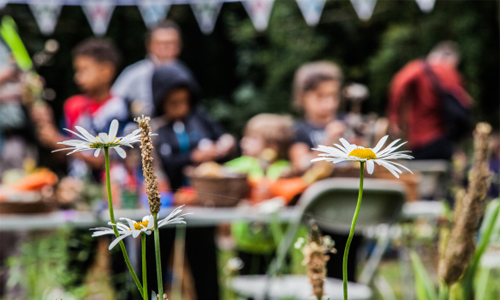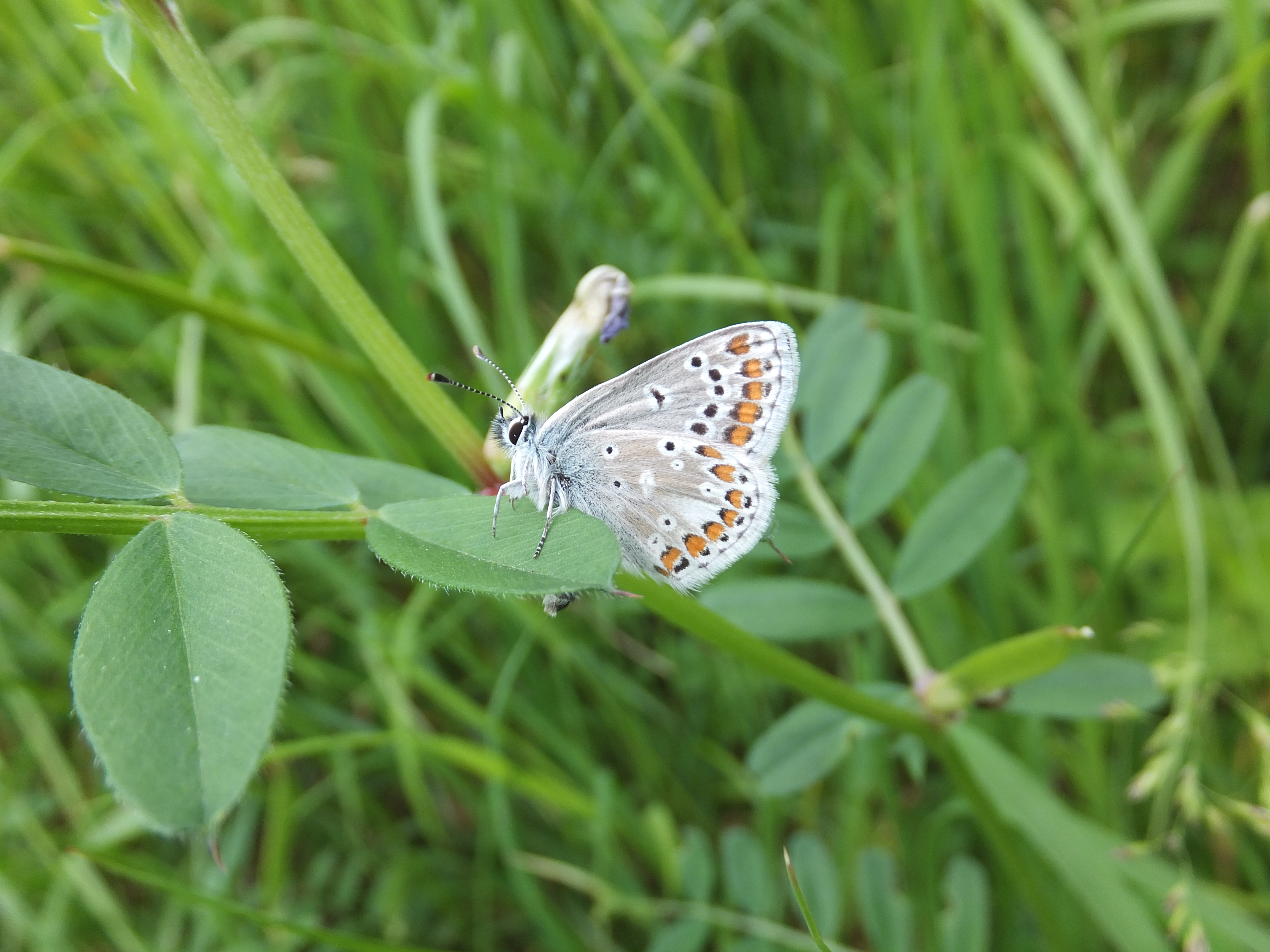This Tuesday the SNCV were out at Kimpton Balancing Pond and Buffer Strip. This nature conservation site is hidden away behind the Kimpton Industrial Estate but provides a valuable wildlife corridor and pond habitat for wildlife.

Kimpton Balancing Pond
The focus of Tuesday’s task day was to cut back the grass meadow surrounding the pond at Kimpton, which has been regularly cut and mown over the years. A regular cutting or mowing regime is a really important part of managing a grassland habitat for conservation, and there are several reasons for this. At Kimpton, regular mowing has helped to suppress large amounts of brambles and nettles that are common on high nutrient soils. Cutting back much of the grass has helped to keep the soil nutrient levels low and stops certain plants from becoming dominant and out-competing wildflowers and scarcer species.
Mowing or cutting grasslands also help to prevent shrubs and trees from establishing in a process known as “succession.” We want to protect Sutton’s grasslands where we can, as they are a really important habitat for wildlife. They are home to many small mammals, reptiles, amphibians and invertebrates, but by allowing them to revert to scrub this wealth of biodiversity can be easily lost.
After the grass had been cut, volunteers got to work raking up the cut grass and loading it to be taken off site. Although this seems like a lot of hard work, it’s actually a key step to help stop nutrients building up on the grass and bringing back the nettles and brambles again! Raking the grass after it has been cut also helps break up the surface soil and creates gaps for seedlings to establish.
Despite having a small team for the day, the volunteers managed to shift almost half a tonne of grass from the site! All this hard work will mean that the grassland at Kimpton continues to support a good variety of plants and animals.
Eleanor Kirby-Green
SNCV Biodiversity Assistant







